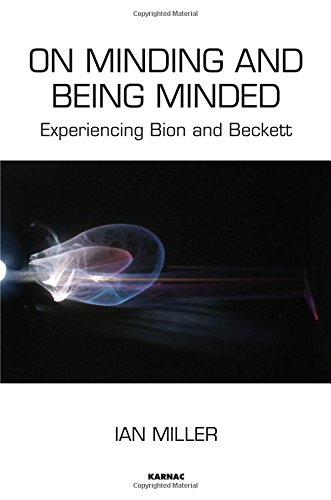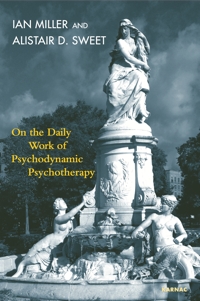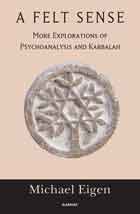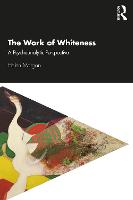Beckett and Bion: The (Im)Patient Voice in Psychotherapy and Literature
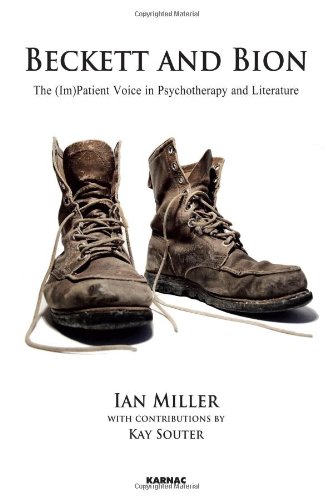
Book Details
- Publisher : Routledge
- Published : August 2013
- Cover : Paperback
- Pages : 256
- Category :
Culture and Psychoanalysis - Category 2 :
Individual Psychotherapy - Catalogue No : 33422
- ISBN 13 : 9781780491479
- ISBN 10 : 1780491476
Also by Ian Miller
On the Daily Work of Psychodynamic Psychotherapy
Price £34.99
There are currently no reviews
Be the first to review
This book focuses on Samuel Beckett’s psychoanalytic psychotherapy with W. R. Bion as a central aspect both of Beckett’s and Bion’s radical transformations of literature and psychoanalysis. The recent publication of Beckett’s correspondence during the period of his psychotherapy with Bion provides a starting place for an imaginative reconstruction of this psychotherapy, culminating with Bion’s famous invitation to his patient to dinner and a lecture by C.G. Jung. Following from the course of this psychotherapy, Miller and Souter trace the development of Beckett’s radical use of clinical psychoanalytic method in his writing, suggesting the development within his characters of a literary-analytic working through of transference to an idealized auditor known by various names, apparently based on Bion. Miller and Souter link this pursuit to Beckett’s breakthrough from prose to drama, as the psychology of projective identification is transformed to physical enactment. They also locate Bion’s memory and re-working of his clinical contact with Beckett, who figures as the 'patient zero' of Bion’s pioneering postmodern psychoanalytic clinical theories.
This reading of Beckett and Bion is not simply interpretive but a construction that has arisen from a very dynamic process, full of hypothesis and surprise. Far from negating other readings, it adds density to the textured understanding of these two brilliant thinkers, each formally in different lines of work but joined through what Bion himself might call a 'reciprocal perception' of psychoanalysis. It is reciprocal because Beckett transformed psychoanalytic thinking into a literary genre while Bion transformed psychoanalytic thinking into process understanding. Each utilized the same object, but with different attentions to different ends. The structure of the book is divided into two parts. Part I begins with a biographical introduction of Beckett and includes a discussion of Beckett’s early metapsychological monograph, Proust. It presents Beckett’s two years in psychotherapy, between 1934 and 193, and addresses the institutional contexts in which this psychotherapy took place, and also discusses of Wilfred Bion’s history and background. Part II addresses Beckett’s radical use of free association as a literary form and examines Beckett’s Novellas, the Trilogy, and his creative transition from prose to drama. It concludes with an exploration of Bion’s theoretical use of his work with Beckett.
Reviews and Endorsements
‘This is an in-depth study of the famous relationship between Samuel Beckett and Wilfred Bion. Beckett had been Bion’s psychoanalytic therapy case (his first) for only two years, but a “psychic twinship” seems to have developed between them which may have unconsciously lasted both their lifetimes. In fact, Bion used him as his first psychoanalytic presentation, “the Imaginary Twin”. The continuation of the “twinship” appeared in the subject matter of the published works of each: sophisticated psychoanalytic themes especially about the intimate nature of relationships. From their extensive research, especially utilizing Beckett’s recently published correspondence, the authors hypothesize that Beckett and Bion were instrumental in launching the post-modern age in their respective fields. Moreover, they also believe that they were thematically paralleling one another, Beckett experimenting with fictionalized psychoanalytic novellas and Bion with Psychoanalytic Field Theory (Container↔ Contained), the psychoanalytic theory of the indivisible nature of the couple, as contrasted with the one-person analyst model of Positivism.
Their encounter seems to have fateful overtones: Beckett had been Bion’s first “control case” at the beginning of his training at the Tavistock Institute, and Beckett was still a young man with considerable anxiety, much of which had to do with his bad relationship with this mother. Who would have known that the patient would later be awarded the Nobel Prize and that his therapist would become one of the foremost analytic thinkers of our time? What is also extraordinary is how well-informed Beckett was in regard to his grasp of psychoanalysis and how uncannily percipient he was in his fictional applications of them.
Other major themes in this work, however, include highly credible historically-based psychoanalytic postulations about Beckett’s personality and his struggles, but with less emphasis on Bion. This is a very fine work, one which should be read by anyone with an interest in the interface of literature and psychoanalysis.’
- James Grotstein, author of A Beam of Intense Darkness: Wilfred Bion's Legacy to Psychoanalysis and But at the Same Time and on Another Level
About the Author(s)
Ian Miller is a clinical psychologist and psychoanalyst, practicing and writing in Dublin, Ireland, where he also leads clinical study/reading groups. He is the author of Defining Psychoanalysis: Achieving a Vernacular Expression, On Minding and Being Minded: Experiencing Bion and Beckett, and co-author of Beckett and Bion: The (Im)patient Voice in Psychotherapy and Literature (with Kay Souter).
Kay Souter is a literary critic and educator, and has taught English literature at universities in Australia for over thirty years. For the last seven years, she has worked as Associate Dean Academic at La Trobe University, and has recently moved into institutional learning development. In the 1980s she decided to learn more about psychoanalysis and was introduced to the work of W.R. Bion, whose work not only resonated for her but also allowed her to explain Samuel Beckett to the drama students she was working with at the time. She has published widely on psychoanalysis and representations of the family, and her work on Bion has allowed her to work on learning space development of recent years.
Customer Reviews
Our customers have not yet reviewed this title. Be the first add your own review for this title.


